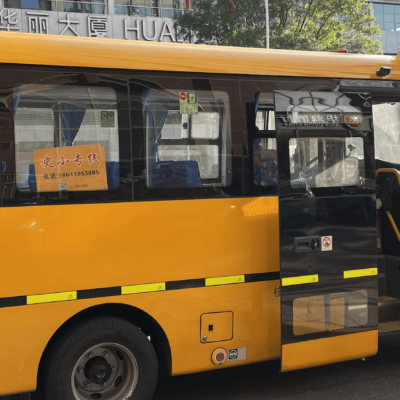Sri Lanka, an island located to the south of India, has struggled to manage its linguistic diversity at both policy and practice levels since its independence from the British in 1948.
The majority population, the Sinhala people, are speakers of Sinhala, and the largest minority, the Tamil people, speak the Tamil language. The Constitution of Sri Lanka has recognized these two languages as the national and official languages of the country while English has been accorded the somewhat vague title of ‘link language’. No other languages have been mentioned by name, nor is there any broad or general acknowledgement of any of the other languages.
Troubled recent history
The trajectory of establishing the national and official languages after the country’s independence in 1948 has been far from smooth—in fact, the prolonged violence between the Tamil separatists and the state security forces had at its heart issues of language rights. These issues arose after the Sri Lanka Freedom Party declared Sinhala the sole official language through the Official Language Act (No. 33 of 1956). Although Tamil was also subsequently declared an official language, language parity remains a crucial issue in Sri Lanka. In the post-conflict context, it has been recommended that Sri Lanka adopts a 3-language policy—first language (Sinhala or Tamil), English, and Sinhala for Tamil speakers/ Tamil for Sinhala speakers as the third language. However, the implementation of this policy has not been successful.
Although there are several smaller, lesser-known languages in Sri Lanka, in the above context where the two major vernaculars and English have been jostling for recognition and rights, there has been little space to discuss issues related to their preservation. However, in a country that is still struggling to foster meaningful and lasting inter-ethnic harmony, it is crucial that these other lesser-known languages be studied, and their maintenance be supported. Therefore, this article discusses the contemporary linguistic landscape of Sri Lanka and the challenges to preserving the smaller languages of the country. This is done by examining official documents such as the constitution and census of Sri Lanka and the role of state institutions engaged in language policymaking in the country.
Lesser-known languages
Although scholars count at least 11 languages in Sri Lanka and Ethnologue, a database of world languages, states that there are five living languages in the country, as stated earlier, only three languages—Sinhala, Tamil, and English are mentioned in the Constitution. The non-acknowledgement of the lesser-known languages in the Constitution has had a negative impact on how these languages are perceived by the larger communities which generally view the “smaller” languages as less important. This is especially damaging in the case of communities such as the Vedda or Aadivasi, Telugu, and Rodi who are marginalized by society due to various socio-historical and socioeconomic factors. It also has an impact on how the community members themselves view their language. For example, in the case of the Sri Lanka Malays, my fieldwork indicates there are many Malay parents who believe that the preservation of Malay is less important than facilitating access to English and/or Sinhala, as these are the languages that will determine their children’s future. Such ideologies are detrimental to the future of the lesser-known languages as a speaker’s attitude towards their mother tongue is a vital factor in determining whether the language will be preserved for future generations or not.
Another major state tool that plays a catalytic role in this context is the Census. There are serious issues regarding the approaches employed by the Department of Census and Statistics:
a) There is no separate enumeration of the languages spoken by the various populations. In the absence of separate data on the numbers of speakers/users of the various languages, scholars and community members look to the figures related to ethnic grouping, assuming a neat correlation between the number of people in an ethnic group and the number of speakers of the language associated with that ethnic group. This is problematic as such a simplistic conflation does not exist on the ground. For example, in the case of marriages between members of different ethnic communities, the Census documents them based on the ethnicity of the father. However, the language spoken in the home of such a family is not necessarily the language of the father. Only a detailed investigation into the family’s linguistic practices will reflect the actual language or languages spoken at home.
b) The Census provides data only regarding seven ethnic groups but there are many other ‘minority’ ethnic groups in the country. Details regarding these communities are subsumed under the category of ‘Other’, which is problematic on both practical and ideological levels. In practical terms, this categorization makes it difficult to obtain data pertaining to individual communities so that the issues related to that community can be better addressed. For instance, if there were a situation where targeted support were to be given, there is no data on the specific issues faced by each community. In ideological terms, the fact that so many of the communities are not counted separately means that their unique identities and histories are not recognized by the state. For instance, Sri Lanka has people of Aboriginal origin, regarded as the ‘original’ people of the land, known as the ‘Vedda’ or ‘Aadivaasi’ community. The community members refer to themselves as ‘Vanniyala Eththo’ (‘people of the forest’). Their numbers were included in the Census until 1963, but since then they have been counted under the category of ‘Other’, which is a travesty considering their status as the oldest community in the country. This makes it difficult to identify the number of people who self-identify as ‘Vedda’ or ‘Aadivaasi’ and, as mentioned earlier, there is no way in the Census also to obtain information regarding the number who claim to speak their unique language, which is now considered endangered. Another consequence of the non-recognition of the ‘smaller’ ethnic groups is that the unique histories of some of them, such as the Aadivasi and the Rodi communities, which are being assimilated into the larger Sinhala or Tamil communities, will be erased with time, or be subsumed under the narratives of the larger ethnic groups.
The larger consequences of these omissions in the Constitution and the Census need to be pointed out: they indicate that only the three major languages mentioned in the Constitution and the seven ethnic communities identified in the Census are of consequence. This signals that the smaller, lesser-known languages, and, by extension, their speakers, are lesser citizens of the country.
In Sri Lanka, given (a) there is no constitutional recognition of or commitment to the protection of the lesser-known languages, (b) the number of speakers of the various languages is not enumerated separately, and (c) the numerically ‘smaller’ communities have been grouped under the term ‘Other’, there has been a rising concern in some quarters regarding the vulnerable state of the smaller communities and the endangerment of the languages spoken by them.
The social and linguistic threats to the ‘lesser known’ languages
The oldest language of Sri Lanka, the Adivasi language, is critically endangered at present due to extensive assimilation with the Sinhala and Tamil languages. Unlike some of the other smaller communities, the Adivasi are a vulnerable group, facing threats not only to their language but also to their traditional way of life. The number of Adivasi settlements is declining as many members of the community leave in search of employment and better economic prospects. This exodus affects language preservation because, along with the physical relocation, the community members also transition to either the Sinhala or the Tamil language, in order to improve their chances of obtaining employment and in order to assimilate with the larger population.
Another itinerant population that faces an uncertain future is the Telugu or Kuraver community, formerly known as the Gypsies of Sri Lanka. Their language, a variety of the Telugu spoken in Tamil Nadu, India, has not been fully documented nor are there any meaningful steps being taken to preserve it.
The case of the Rodi community and their language is also salient. The Rodi, a supposedly ‘low-caste’ sub-group of the majority Sinhala community, has suffered due to caste-based discrimination, even though legislation was passed in 1957 to prevent discrimination due to caste, with a subsequent amendment in 1971 imposing severe penalties on those who do so.
In some instances, community members take matters into their own hands and devise their own means of supporting the preservation of their languages. Sometimes, these efforts are supported by local and foreign academics who are interested in the respective languages and cultures. The relationships forged between the visiting academics and the local communities have often resulted in positive outcomes for language preservation. The Sri Lanka Malay (SLM) and Sri Lanka Portuguese (SLP) languages are cases in point. For instance, Ronit Ricci’s efforts to preserve Malay writing in Sri Lanka by digitizing old documents is a unique and valuable contribution towards preserving the written language of the Sri Lanka Malay. This initiative has led to some young Sri Lanka Malays residing overseas taking an interest in the history of the people and the language. These young expatriates are presently discussing ways in which they can contribute to strengthening the identity of the community through the preservation of their language.
In the case of Sri Lanka Malay, there has also been collaboration with the High Commission of Malaysia and the Indonesian Embassy in Colombo to provide Malay/Indonesian language classes to members of the Sri Lanka Malay community. However, the critical issue of language standardization gets overlooked in initiatives like this. Malay is a pluricentric language in that it has many varieties which are spoken in the different Malay-speaking countries. In Indonesia it is referred to as Bahasa Indonesia and in Malaysia it is referred to as Bahasa Melayu. The Malay spoken in Sri Lanka is called Sri Lanka Malay (SLM) and is a unique variety which incorporates a largely Malay vocabulary and a complex syntactic system that draws on both Sinhala and Tamil. Therefore, SLM is neither Indonesian Malay nor Malaysian Malay. In a situation where the community members are struggling to preserve this unique variety, the value of teaching Indonesian or Malaysian Malay is debatable. However, the interventions by the respective foreign missions have led to questions regarding which variety of the language should be preserved: the ‘original’, ‘standard’ variety (Indonesian/Malaysian) or the indigenous variety (SLM), and this debate is invaluable for the future of the Sri Lankan variety.
In the case of the Sri Lanka Portuguese community, the work done by Professor Hugo Cardoso and his team bears mention. Their work in documenting the language and cultural practices such as song and dance of the community has led to an increased interest in these aspects among the community members. As a result, they have now presented their music and dance in Colombo, the capital, and overseas.
There are also smaller trading communities that trace their origins to India and who moved to Sri Lanka in the late 19th century and during the partition of India and Pakistan, whose languages are threatened. The members of these communities, who are Muslims by religion, are concerned about the future of their languages. One such community are the Memons of Sri Lanka. Their language, Memoni, which has elements of Sindhi, Urdu, and Gujarati, is spoken by around 1.5 million Memons worldwide, with some variation, but the Sri Lankan Memons, who are about 5,000 strong, are concerned that the language is threatened in Sri Lanka. Therefore, they are presently working on revitalizing their language in Sri Lanka by conducting surveys, interviews and a Language Vitality Test to assess the level of actual language loss. They also plan to introduce technology-mediated tools to stem this perceived language loss.
A community that shares a similar history is the Dawoodi Bohra community of Sri Lanka. This community’s language is known as Lisan-al-Dawat, or, more commonly, Dawat-ni-zaban. It has elements of Arabic, Persian, Urdu, and Gujarati and is written in the Arabic script. There is a Bohra school in Colombo, the capital of Sri Lanka, and the language is taught in that school although the main academic subjects are taught in English. Therefore, the fear that the language is disappearing is relatively lower in this community than in other communities that speak lesser-known languages.
Sri Lanka is also home to a small community that traces its roots to Africa. They are known as the African (or Afro) Burghers; they were formerly referred to as ‘Kafirs’ but the community now rejects this term as they view it as derogatory. This community, known for their unique dance and music, speaks Sri Lanka Portuguese with a smattering of words of African origin since most of them trace their ancestry Africans who were brought to Sri Lanka as slaves by the Portuguese colonisers. The community faces a precarious future as they face unemployment and resultant economic difficulties.
The State’s response
Unlike in India, Sri Lanka has no State institutions devoted to promoting, teaching and researching smaller languages. There are three State institutions dedicated to languages: the Official Languages Commission, the Department of Official Languages, and the National Institute of Language Education and Training.
The mandate of the Official Languages Commission is to “regulate and supervise provisions relating to the language rights contained in Chapter IV of the Constitution of the Democratic Socialist Republic of Sri Lanka”.
The Department of Official Languages provides translation services, compiles glossaries, textbooks, and dictionaries, and conducts language promotion programmes to support the implementation of the official languages policy of the country. Interestingly, one of its objectives is “Creating a society skilled in Sinhala, Tamil, English and foreign languages which could contribute towards economic development” and therefore it also conducts courses in French, German, and Japanese. When senior government officials are asked why they cannot consider the protection and promotion of the lesser-known languages of Sri Lanka as part of their mandate, they state that they are not permitted to do so because their duty is limited to ensuring the protection and promotion of the languages mentioned in the Constitution. However, the Department of Official Languages promotes foreign languages, so it appears that the State will go beyond the mandate set out in the official languages policy to ensure economic development. By extension then, the reason the lesser-known languages are overlooked is because promoting them will not result in any economic benefit to the State.
The third State arm involved in language development is the National Institute of Language Education and Training. The Institute was established in 2007 to support teachers of Sinhala and Tamil and to aid in the creation of qualified translators and interpreters for the three languages mentioned in the Constitution—Sinhala, Tamil, and English. Once more, it appears that the smaller languages are overlooked because they go unmentioned in the Constitution.
Language description and documentation (LDD) are crucial aspects of language preservation. As seen above, in Sri Lanka, no State organization has been delegated the task of undertaking large-scale LDD projects of the lesser-known languages, and there is no engagement with smaller communities regarding the issues surrounding the preservation of language and culture. Neither is the systematic and scientific study of these languages and communities high on the agenda of the various non-governmental organizations. Therefore, these languages remain under-researched, with the only exception being the work done by a few interested linguists. This has a hugely negative impact not only on the future of these languages, but also on the morale of the people who speak them.
Conclusion
At present, Sri Lanka is poised to enter a new phase in its modern history—for the first time since independence the state is governed by a left-leaning socialist president, Anura Kumara Dissanayake, from the National People’s Party (NPP) and his government. The government, with its dynamic leader who has pledged to “create space for all ethnicities to envision a shared future as a unified Sri Lankan nation” holds the promise of a new era for the country. However, the task before the new government is huge: the country is heavily in debt, inflation is at a record high, and the people are tired of and disillusioned with successive governments that have been both corrupt and largely inefficient. Moreover, ethnic tensions are constantly present, lurking just below the surface, and frequently kindled by members of the clergy and opportunistic politicians for their benefit. The new government was elected because, among other things, they promised a new political and social order in which ethnic diversity would be respected and celebrated. They must prove that they can and will deliver on their promises.
Image: Colombo, Sri Lanka. Credit: Flickr/tbz.foto




